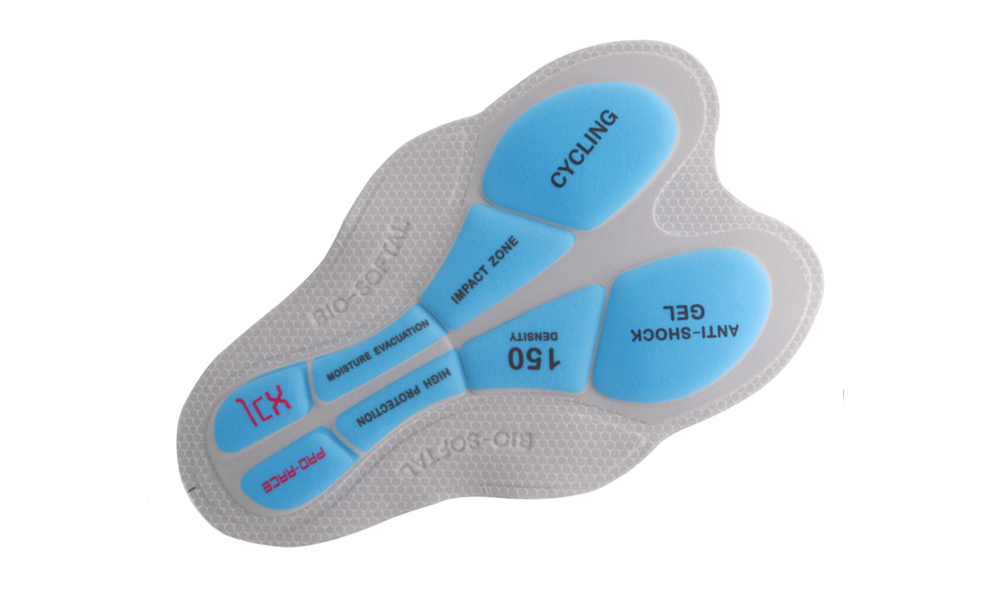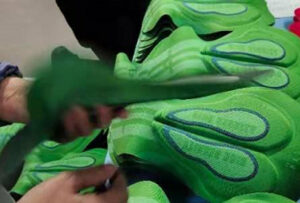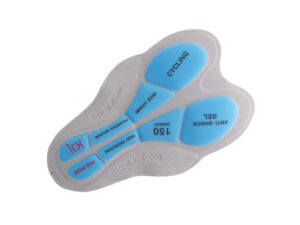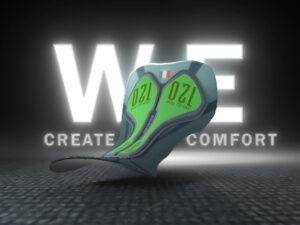A chamois cycling pad is more than just a piece of fabric; it’s a critical feature in cycling shorts designed to enhance comfort and prevent the irritation that often comes with long rides. This padding, originally made from the soft leather of the chamois goat, has evolved significantly to incorporate advanced synthetic materials that better suit the needs of modern cyclists. The evolution from natural to synthetic materials has greatly improved the functionality and durability of these pads, making them indispensable for both casual riders and professional cyclists.
Table of Contents
The Evolution of Chamois Pads
The journey of chamois pads from simple leather pieces to complex engineered components is a testament to the advancements in textile technology and ergonomic design. The original chamois pads, crafted from actual chamois leather, were valued for their softness and absorbency. However, they required extensive care to maintain their condition and prevent hardening. With the rise of synthetic materials, manufacturers began to adopt new fabrics and foams that offered improved moisture management, antibacterial properties, and enhanced comfort. This transition extended the lifespan and allowed for the integration of technologies that target Design and Technology
The design of chamois pads has evolved significantly to meet the specific anatomical and physiological needs of cyclists. Here are some of the key design features that contribute to the functionality of a chamois pad:
1. Ergonomic Shaping
Modern chamois pads are shaped based on detailed anatomical studies to ensure they provide maximum comfort without excess bulk. This involves designing pads that fit the contours of the body closely, offering support where it’s needed most while minimizing material in less critical areas to enhance breathability and flexibility.
2. Multi-Density Layering
Chamois pads often feature multi-density layering to further enhance comfort and effectiveness. This means different areas of the pad have different thicknesses and firmness levels. Areas under the sit bones, for example, might have denser padding to absorb shocks and reduce pressure points, while less sensitive areas are made thinner to decrease bulk and improve moisture management.
3. Breathability and Moisture Management
High-performance chamois pads are designed with advanced fabrics that not only wick moisture away from the skin but also allow for optimal airflow. These features are crucial for maintaining comfort and reducing the risk of skin irritation during long rides.
What’s Inside Your Chamois Pad?
A closer examination of the internal structure of a chamois pad reveals a complex assembly designed to enhance riding comfort and performance:
Core Materials: The core of a chamois pad typically consists of one or more types of engineered foam. Memory foam is a popular choice due to its ability to conform to the body’s shape, providing personalized comfort. Some pads also incorporate gel inserts strategically placed to cushion against the most intense pressure points encountered during cycling.
Surface Layer: The top layer of the pad, which comes in direct contact with the skin, is critically important. It is usually made from a soft, elastic fabric that can stretch and conform to the body’s movements. This layer is often infused with antimicrobial properties to inhibit the growth of bacteria and is designed to draw moisture rapidly away from the skin, keeping the rider dry and comfortable.
Reinforced Edges: Reinforced edges are a common feature to prevent the edges of the pad from fraying and ensure a smooth transition to the main fabric of the cycling shorts. These are typically executed with a softer yet durable material that can withstand repeated washing and use.
Benefits of Quality Chamois Pads
Investing in a high-quality chamois pad brings several benefits that can significantly enhance the cycling experience:
Comfort and Reduced Friction: The primary role of the chamois is to provide a cushion between the cyclist’s body and the saddle, reducing friction and preventing the development of saddle sores and other discomforts.
Moisture Management: By efficiently wicking away sweat, a good chamois pad helps maintain skin integrity and comfort, preventing the damp conditions that can lead to chafing and bacterial growth.
Enhanced Performance: With reduced discomfort, cyclists can focus more on their performance. Comfortable padding enables longer periods of riding without the distraction or pain that might otherwise impede a cyclist’s endurance and enjoyment.
By incorporating these advanced materials and designs, chamois pads not only provide comfort but also contribute to the overall performance of the cyclist, allowing for longer and more enjoyable rides without the interruption of discomfort. specific needs of cyclists, such as varying densities of padding and anatomically shaped designs that fit perfectly between the rider and the saddle.
Materials Used in Chamois Pads
Modern chamois pads showcase a blend of sophistication and science in their construction. Here’s a closer look at what makes up these essential components of a cyclist’s gear:
Foams and Gels: At the heart of a chamois pad is its cushioning material, typically made from high-density foams or silicone gels. These materials are chosen for their ability to absorb shocks and reduce vibrations from the road. The foam can be layered or sculpted in various densities to provide more support where it’s most needed—under the sit bones, for instance—while softer foam might be used in less pressure-sensitive areas.
Fabrics: A fabric that is in direct contact with the skin covers these layers of foam or gel. This fabric must fulfill several functions: it should be soft to prevent chafing, stretchable to move with the body, and capable of wicking moisture away from the skin to keep the rider dry and comfortable. High-tech synthetic fibers, often treated with antimicrobial finishes, are typically used to meet these needs.
Antibacterial Treatments: Given the warm and moist environment of cycling apparel, chamois pads are frequently treated with antibacterial agents to prevent the growth of bacteria and fungi. This treatment helps to reduce odors and the risk of skin infections, which are common concerns for cyclists, especially those engaging in prolonged and frequent rides.
These materials and technologies combine to create a chamois pad that enhances comfort during rides and supports cyclists’ health and hygiene. By understanding these components, cyclists can make informed choices about their gear, ensuring they choose products that match their specific needs and riding conditions.
Choosing the Right Chamois Pad
Selecting the appropriate chamois pad is essential for maximizing comfort and performance on the bike. Here are several factors to consider when making this choice:
Type of Cycling: Different cycling disciplines require different types of padding. For instance, road cyclists might prefer thinner, denser pads for longer rides, whereas mountain bikers might opt for thicker, more robust pads for better protection against rough terrain.
Ride Duration: The length of time you spend on the bike also dictates the type of chamois pad needed. Longer rides generally require more padding to prevent discomfort and fatigue, while shorter rides might be more comfortable with less bulky options.
Personal Anatomy and Preferences: Everyone’s body is different, and what works for one cyclist may not work for another. Consider your own experiences with various pads and choose one that fits well and feels comfortable throughout your ride.
Maintenance and Care of Chamois Pads
Proper maintenance of your chamois pad is crucial for ensuring its longevity and continued effectiveness. Here are some tips for caring for your chamois:
Washing Instructions: Always follow the manufacturer’s instructions for washing your cycling shorts. Typically, this involves using a gentle, non-biological detergent and cold water to prevent damaging the fabric and padding.
Drying: Avoid using a dryer if possible, as the heat can degrade the elasticity and padding of the chamois. Instead, air-dry your shorts in a well-ventilated area out of direct sunlight.
Regular Inspection: Regularly check your chamois pad for signs of wear and tear. Over time, the padding can compress and lose its effectiveness, which means it might be time for a replacement.
Common Issues and Solutions
Even with the best care, chamois pads can develop issues that affect comfort and performance. Here are some common problems and their solutions:
Bunching: If your chamois pad begins to bunch up, it might be due to a poor fit of the cycling shorts or a pad that’s too large for the shorts’ design. Ensure your shorts fit snugly, and consider trying a different pad size or shape.
Chafing: Chafing can occur if the chamois does not adequately wick moisture or if the shorts do not fit correctly. Look for a chamois with better moisture management properties and ensure your cycling shorts fit well without any loose fabric.
Odor Buildup: Persistent odors can be a sign of bacterial growth. Opt for chamois pads treated with antimicrobial agents, and ensure you wash your cycling shorts thoroughly after each use.
By understanding these common issues and how to address them, cyclists can enhance their comfort and extend the life of their chamois pads, ensuring many smooth and enjoyable rides.





